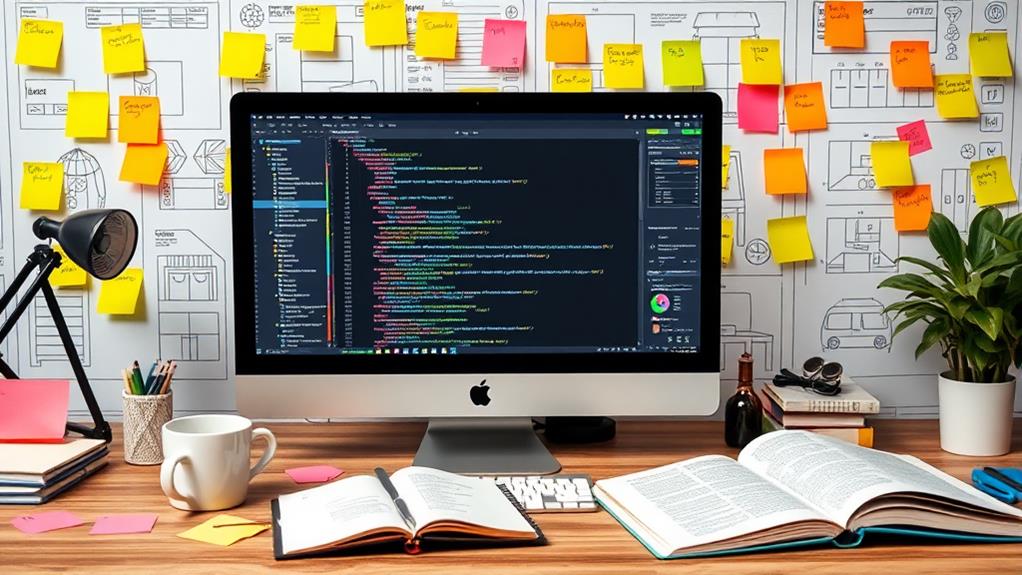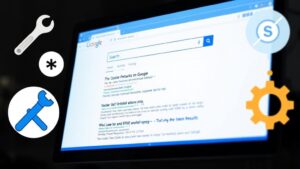Cloning a website involves creating an exact replica of its design and functionality, which can be great for testing or inspiration. First, choose a site and verify you have permission to clone it. Use tools like HTTrack or WordPress plugins like Duplicator to simplify the process. Inspect the target site with Chrome Developer Tools to gather necessary HTML and CSS elements. Don't forget to back up your original site. After cloning, test for broken links and media functionality. Follow these steps, and you'll be well on your way to mastering website cloning techniques. More details await!
Understanding Website Cloning
Understanding website cloning is fundamental for developers looking to leverage existing designs while creating new projects. Website cloning involves creating an exact copy of a website's code and content, allowing you to use existing HTML and CSS as templates.
You can clone a website using various methods, such as HTTrack, which enables you to download entire sites, or through Chrome Developer Tools to inspect and copy specific elements. Additionally, implementing best practices for database creation can enhance your cloned site's security and performance, guaranteeing a smoother development process secure database setup tips.
In web development, cloning is particularly useful for testing changes in a safe environment. By replicating a site, you can experiment with new features or updates without risking disruptions to the original live site. This practice enhances your website management strategy, as it allows you to verify functionality before going public.
However, it's important to keep ethical considerations in mind. While you can clone a website's structure, you should avoid direct replication of original content to prevent legal issues related to plagiarism. Instead, focus on using the design and layout as inspiration for your projects.
Ethical Considerations
Cloning a website can be a valuable tool for developers, but it's vital to navigate the ethical landscape carefully. When considering ethical cloning, remember that copying a site without permission can lead to serious legal repercussions, including copyright infringement and intellectual property theft. Always respect the original creator's rights by seeking permission before using or modifying their work.
Additionally, be aware that security breaches can arise from improperly cloned sites, as they may introduce vulnerabilities if not managed properly, making it important to implement necessary security measures during the development process.
Instead of replicating content or branding, focus on drawing inspiration from existing designs. This approach not only fosters creativity but also aligns with responsible web development practices. If you want to quote small portions of content, make sure you provide proper attribution to the original source to maintain respect for their efforts.
Understanding the fine line between educational use and content theft is significant. Using another site as a learning tool is acceptable, but avoid crossing into territory where your actions could be seen as content theft.
Prerequisites for Cloning
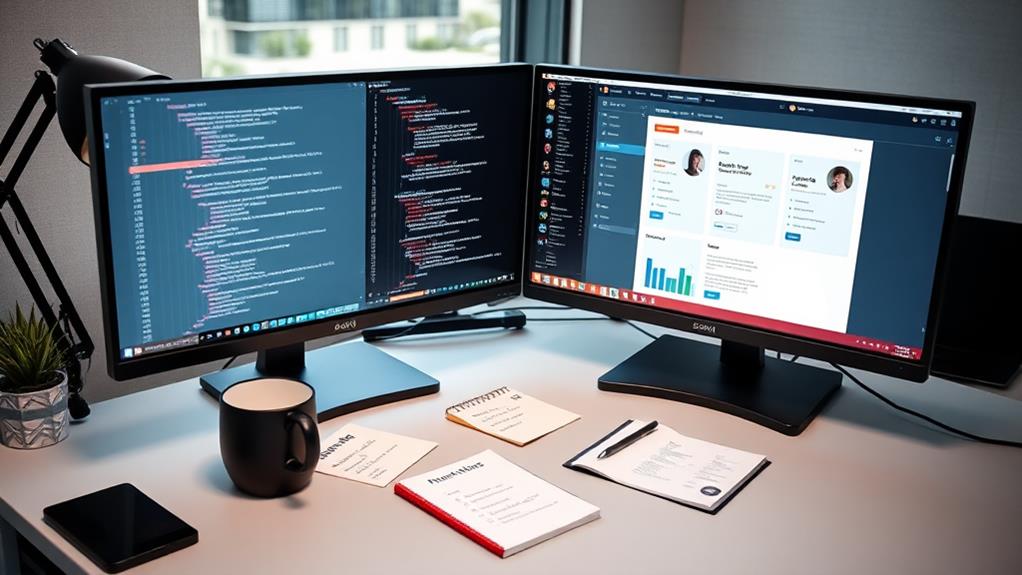
Before you start cloning a website, you'll need to gather the right tools and software to guarantee a smooth process.
It's also essential to back up all your website files and databases to prevent any data loss.
Utilizing a reliable backup plugin, such as UpdraftPlus for its user-friendly interface and scheduled backup options, can help safeguard your data effectively.
Required Tools and Software
To successfully clone a website, you'll need several essential tools and software that streamline the process and guarantee safety.
First, make sure you have access to both staging and production environments. This setup allows you to test changes without affecting the live site.
A reliable backup of your website files and databases is critical before starting the cloning process. Familiarity with backup plugins like UpdraftPlus or Duplicator will simplify creating backups. These tools help you manage your backups efficiently and make certain you have everything you need.
You'll also need an FTP client like FileZilla to transfer your website files easily. Additionally, database management tools such as phpMyAdmin are necessary for handling the database aspect of the cloning process.
Understanding the differences between staging and production environments is essential. This knowledge will help you manage your cloned site effectively without disrupting the original website.
Backup and Safety Measures
How can you guarantee a smooth cloning process? Start by ensuring you have a reliable backup of both your website files and databases. This step is vital to prevent any data loss during the cloning procedure.
Use popular backup plugins like UpdraftPlus or Duplicator to create these backups, as they simplify the restoration process if anything goes wrong.
Next, familiarize yourself with the differences between the staging environment and the production environment. The staging environment is where you can safely test changes without impacting your live site.
It's important to have access to both environments so you can manage the cloned site effectively.
Before making any updates or changes to the live site, always check for plugin compatibility in the staging environment. This precaution helps maintain the integrity of your original site and reduces the risk of unexpected issues.
Tools for Cloning Websites
When you're ready to clone a website, a variety of tools can simplify the process and cater to different needs. One popular option is HTTrack, an open-source tool that downloads entire websites, preserving their structure and content for offline access.
If you're using a Mac, SiteSucker is a paid app that streamlines the cloning process by downloading all pages and files from a specified URL, although it mainly ignores JavaScript. For effective website preservation, consider using WordPress backup plugins to safeguard your data before cloning.
For targeted cloning, you can use Chrome Developer Tools to inspect and copy specific HTML and CSS elements from a webpage without having to download the entire site.
If you're working with a WordPress installation, cloning plugins like Duplicator automate the process by creating a package of the site that can be easily migrated.
For advanced users, manual cloning is also an option. This method involves downloading website files and databases via FTP or cPanel, giving you full control over the cloning process but requiring more technical expertise.
With these website cloning tools at your disposal, you can efficiently clone a website that meets your needs.
Methods for Cloning
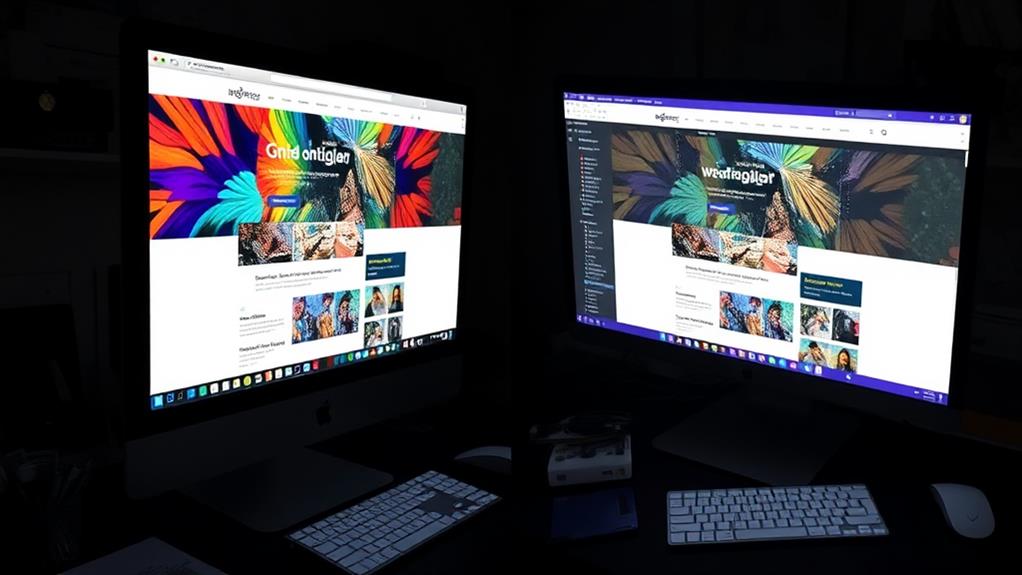
Cloning a website can often be accomplished quickly and efficiently through various methods, each catering to different levels of technical expertise.
If you're looking for a simple approach, consider using your hosting provider's cloning feature. This method usually requires just a few clicks, completing the process in minutes without any technical skills. To guarantee your cloned site is secure, consider utilizing services that offer secure cloud storage for backups, which provides peace of mind against data loss.
For those with moderate expertise, manual cloning involves compressing your website files and migrating the database using phpMyAdmin. You'll need to update configuration files, but it gives you full control over the cloning process.
If you're using WordPress, plugins like Duplicator can automate this task, allowing you to create a backup package of your site and import it easily to a new location.
Another straightforward option is HTML cloning, where you save the source code of a webpage and its linked assets for static site replication.
Step-by-Step Cloning Process
To start the cloning process, you need to identify the target website you want to replicate.
It's vital to guarantee that you follow best practices for secure file uploads when saving assets to protect sensitive information.
Next, save all necessary assets, including images, CSS, and JavaScript files, to guarantee the cloned site looks and functions just like the original.
With these steps, you're ready to move forward in creating your cloned website.
Identify Target Website
Choosing the right website to clone is essential for a successful project. Start by identifying your target website, making sure you have permission to clone it to avoid copyright issues.
Once you've selected a site, use tools like Google Chrome Developer Tools to inspect its HTML structure and CSS styles. Right-click on the page and select "Inspect" to access these tools.
Focus on key elements such as headers, footers, and main content areas, as they'll help you understand how the website is organized. Document these elements carefully.
Pay attention to any linked resources, like CSS files and images, that are important for replicating the website's design accurately.
Make a note of the URLs of the assets you need to download. This step is essential to ensuring you maintain the original layout and functionality of the site.
By gathering this information, you'll be well-prepared to clone the website effectively, allowing you to replicate its design and achieve a similar user experience.
With the right groundwork laid, you can move forward confidently into the next stages of your cloning project.
Save Necessary Assets
With the groundwork laid in identifying your target website, the next step involves saving all necessary assets to replicate its design accurately. To do this, you'll want to use the 'Inspect' feature in your browser's Developer Tools. This tool allows you to locate paths for various linked resources like CSS files, images, and JavaScript files from the original website.
Start by downloading CSS files, confirming you keep the correct file names and directory structure. This way, when you link them in your HTML file, the original styling remains intact.
For images, right-click each one and select "Save Image As" to retain the original file names. If you have many images, consider using a bulk downloader to save time.
Next, confirm all saved assets are correctly referenced in your cloned HTML file. Double-check the paths to avoid broken links, which could disrupt the user experience.
Troubleshooting Common Issues
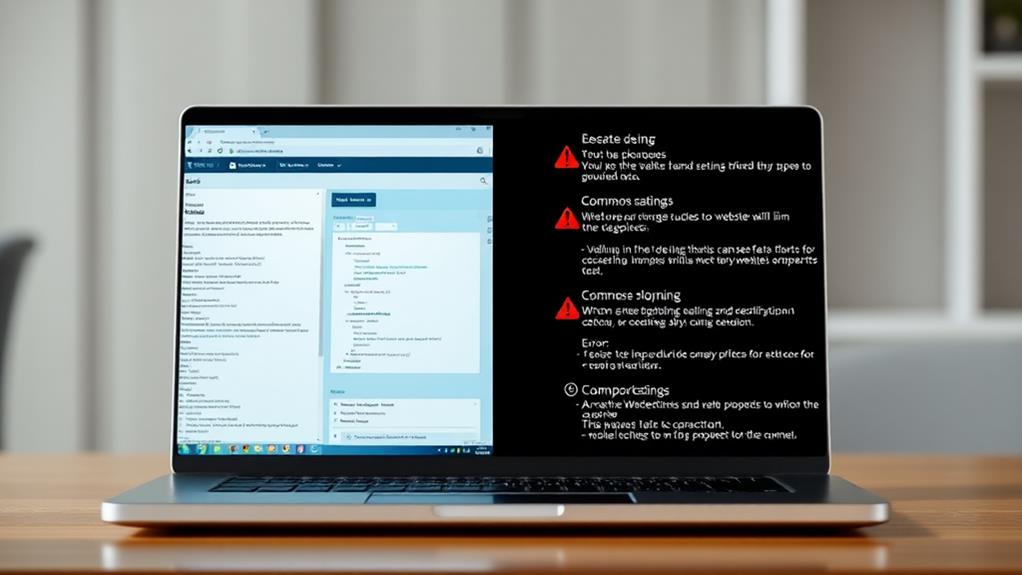
Cloning a website can sometimes lead to unexpected issues, and knowing how to troubleshoot them is vital for maintaining a seamless user experience.
Regular database checks can prevent issues related to database connection errors that may arise during the cloning process. Here are some common problems you may encounter and how to resolve them:
- Broken Links: After cloning, always check for broken links. These can negatively impact your SEO and frustrate users. Use tools or plugins to identify and fix them.
- Missing Images: If you notice missing images, verify that all media files were transferred correctly. Check your media library and re-upload any missing assets.
- Plugin Compatibility: Verify that all plugins function properly in the cloned environment. Some may behave differently, leading to errors or conflicts. Update or replace incompatible plugins as necessary.
- Site Performance: Monitor your site's performance. Any slowdowns or errors could be due to changes in server settings. Optimize loading times by checking for caching issues or unnecessary scripts.
Working With Cloned Websites
Experimentation is a significant aspect of web development, and working with cloned websites offers a safe space to test design changes and new features without risking the integrity of your live site. When you clone a website, you create a controlled environment that allows you to explore web design innovations while guaranteeing your original site remains intact.
Regularly backing up your original site as part of your cloning process is fundamental for maintaining data integrity and security; this way, you can always restore your site if needed importance of regular backups.
As you engage in the development process, remember to regularly check that all features function correctly. This includes verifying forms, navigation, and any external content. It's also important to verify that all links direct to the correct pages and to update tracking IDs or API keys to avoid conflicts with the original website.
Testing responsiveness is fundamental, too. You'll want to confirm that your cloned website performs well across different devices and browsers, guaranteeing a consistent user experience.
As you experiment with design changes, don't forget to save important assets like images or scripts that you may need later.
Cloning can serve as a practical method for learning about web design, giving you insights into the structure and elements of well-designed pages. Embrace the opportunity to enhance your skills and creativity as you work with cloned websites.
Enhancing Your Web Design Skills
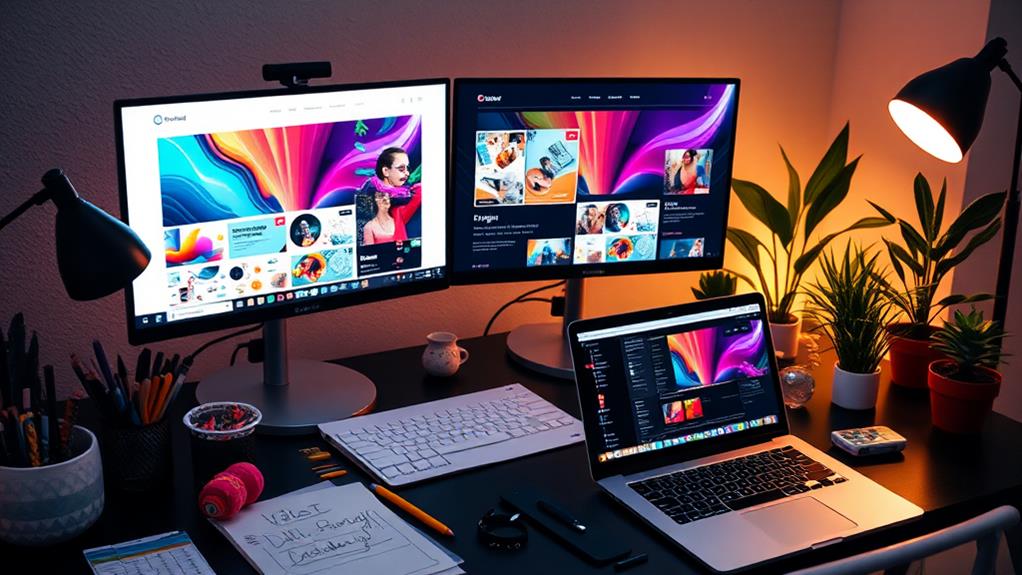
To enhance your web design skills, it's vital to embrace continuous learning and actively seek out resources that expand your knowledge.
As you explore web design, consider these key areas:
1. Master HTML and CSS: These foundational programming languages are significant for building the structure and style of your websites.
Additionally, researching keyword optimization strategies can help you tailor your web content for better search engine visibility.
2. Explore Design Tools: Familiarize yourself with tools like Sketch, Figma, and Adobe Creative Suite to create visually appealing, user-centered designs.
3. Engage in Usability Testing: Participate in user research and usability testing to gain insights into user needs and behaviors.
This will inform better design decisions and enhance user experience.
4. Focus on Responsive Design: Make certain your websites function seamlessly across various devices and platforms, allowing for a broader audience reach.
Conclusion
Now that you've got the tools and knowledge to clone a website, imagine the endless possibilities at your fingertips! Whether you're looking to learn, innovate, or create something entirely new, the world of web design is yours to explore. Just remember to navigate the ethical waters carefully and respect the original creators. So, are you ready to plunge into and start your journey as a web design wizard? The next great website could be just a clone away!

